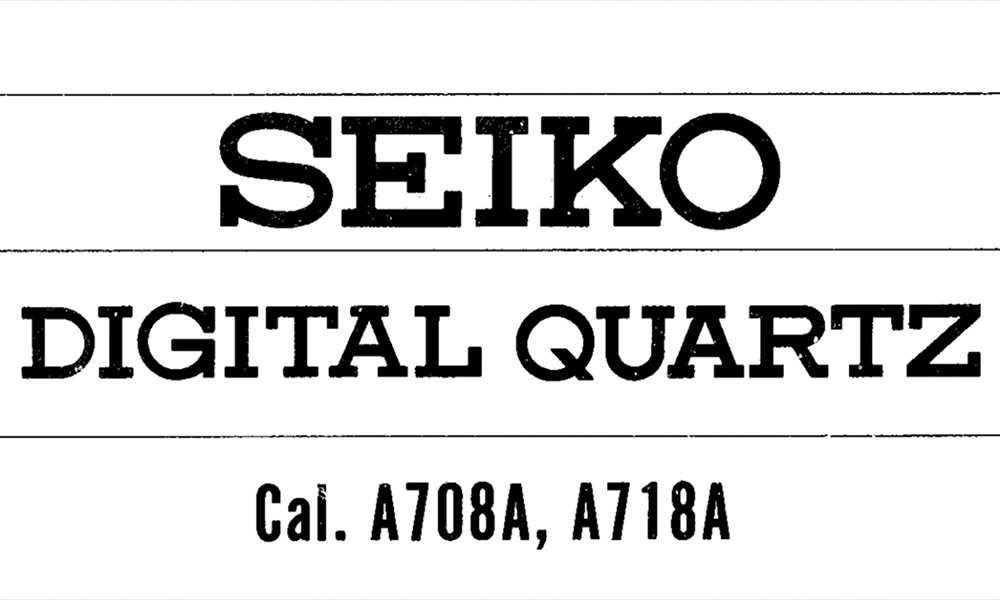The SEIKO World Time "TWA"
Model No. A708-5000
In 1984 SEIKO introduced several new lines of digital World Time watches. The A708 was the entry-level option.
In 1984 SEIKO released several new digital world time watches based on the caliber A708A and A718A modules. These modules were very similar, with the main difference being that the A708A did not include an alarm complication, whereas the A718A did. The A718A also had a modified LCD display to manage the alarm settings. The cases are however quite different, and for this reason, the A718 is treated to its own separate article.
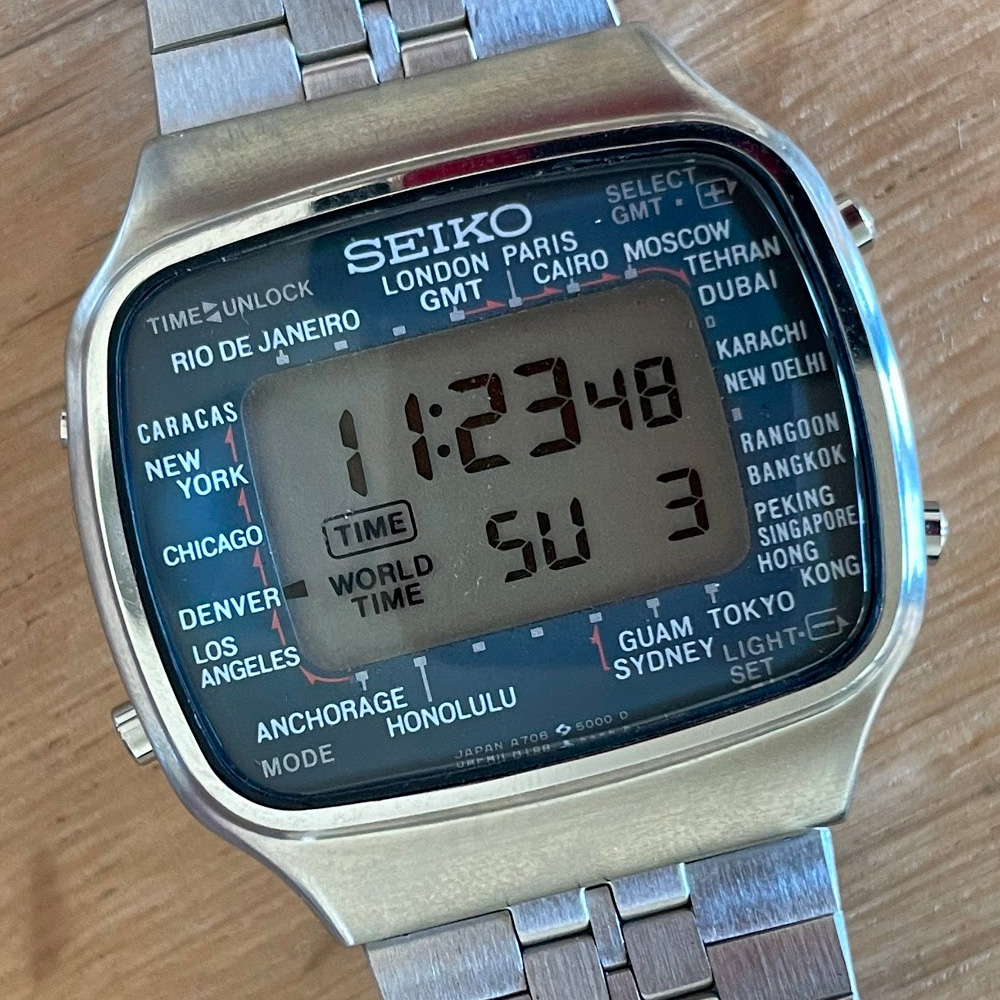
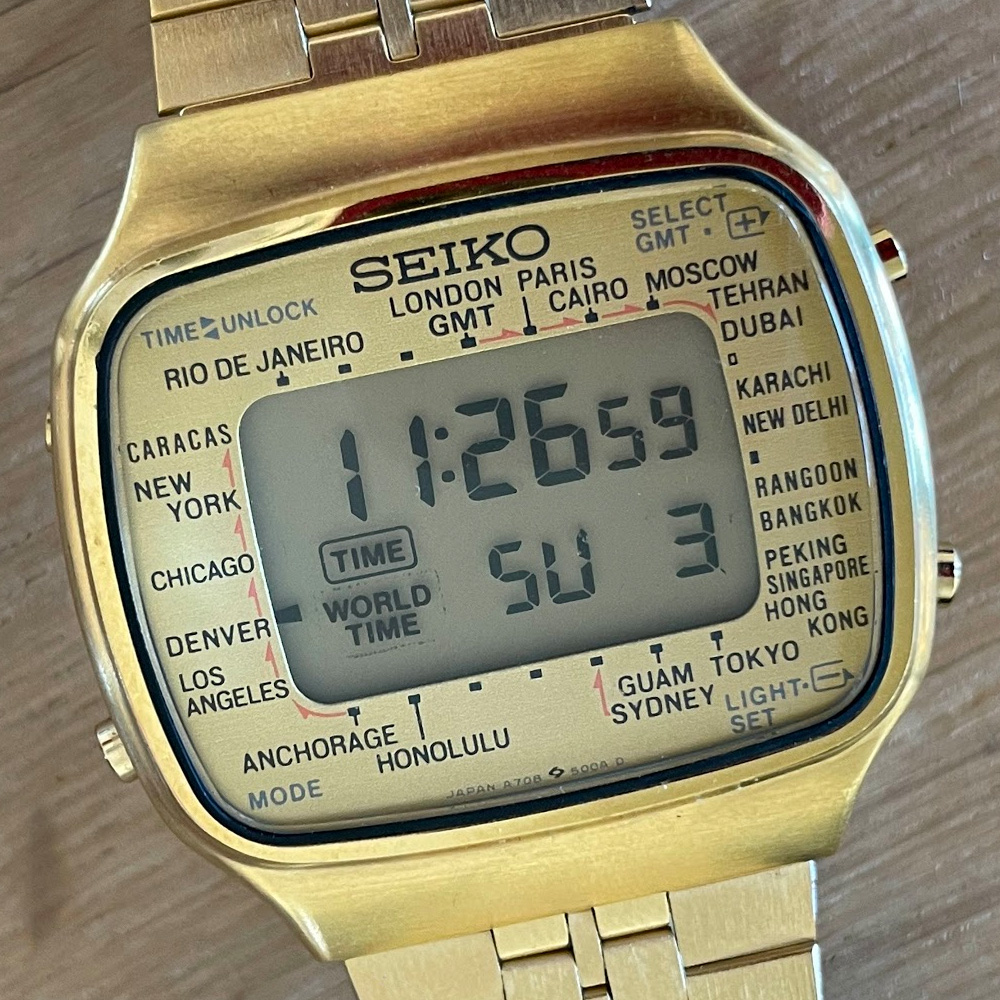
Table of Contents
- Key Statistics
- Top-Line Sales Info
- Case and Crystal
- Comparison with the M158
- Measurements
- Dial Frames
- Bracelets
- Production Numbers
- Resale Value
- Other Resources
- Related Articles
Key Statistics
37.5mm
Watch Case Size w/o Crown
37.5mm
Lug to Lug Measurement
Rare
Rarity Index Among Cataloged Examples is 8.2 out of 10
22
Total Examples Cataloged
11.6%
Percentage of all Cataloged Digital Examples
Top-line Sales Info
- 37.5mm case (not including buttons)
- 37.5mm lug to lug
- 28 selectable Time Zones
- Display Medium: Nematic Liquid Crystal, FE-Mode
- Time micro-adjuster : Trimmer condenser system
- Offered in Stainless Steel and Gold-tone versions
- MSRP: 14,300 YEN / $Unknown USD in Stainless Steel
- MSRP: 17,000 YEN / $Unknown USD in Gold-tone
Case and Crystal
The case is about square at 37.5mm wide and tall (lug to lug). There are four buttons, one at each corner of the case. The general shape and size of the A708-5000 is reminiscent of the M158, in the best ways. And unlike any other model in the digital generation, this watch has a curved crystal, which gives a slight magnification effect to the LCD and lends a little more vintage charm.
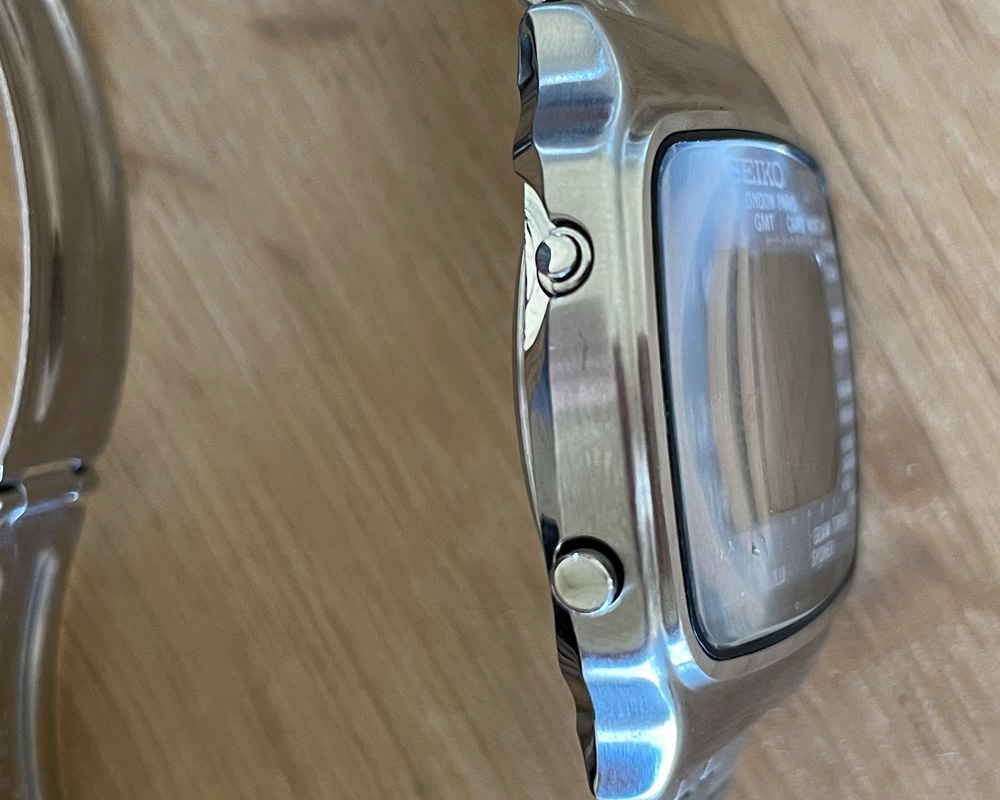
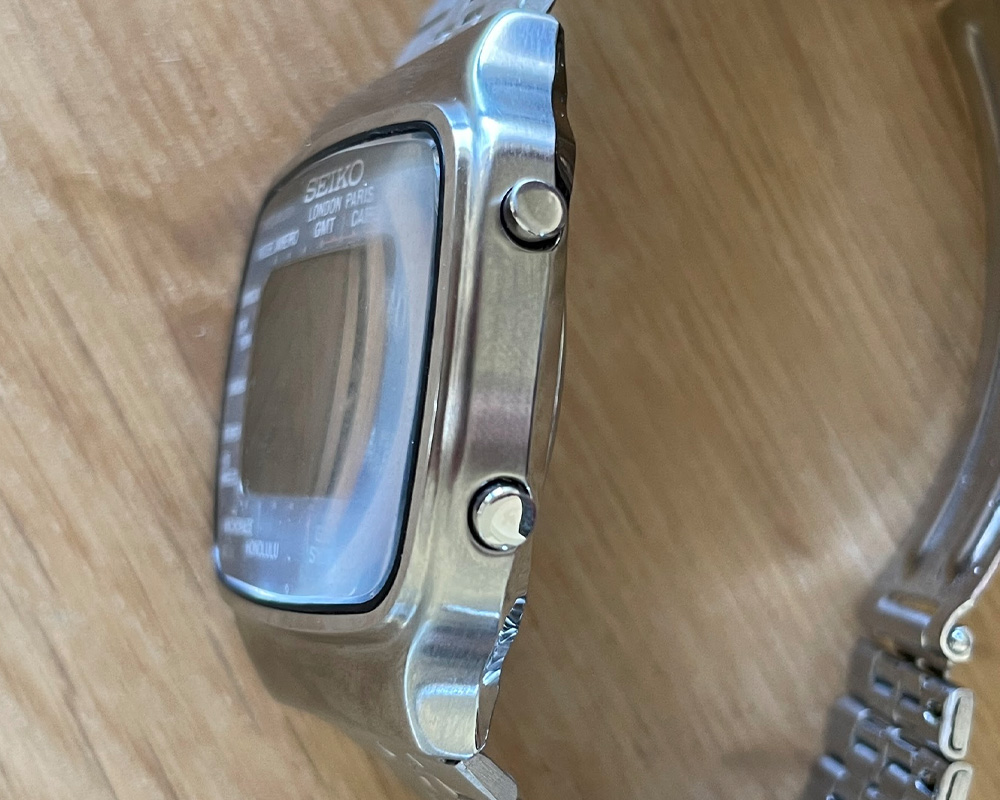
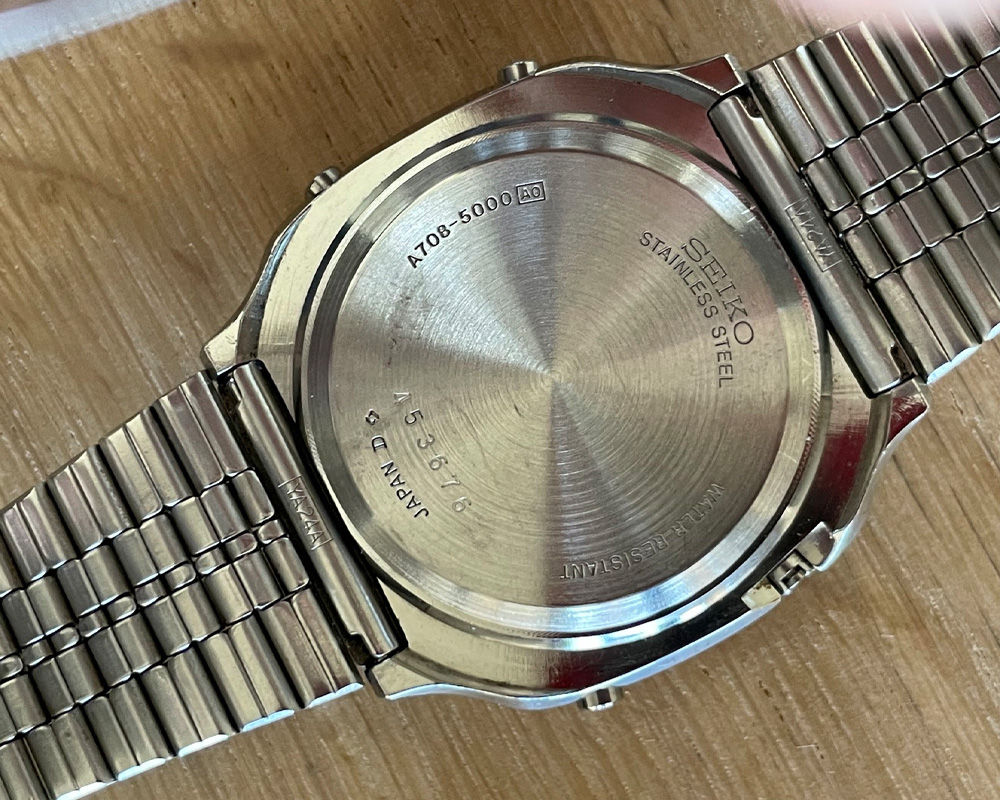
Comparison with the M158
On the wrist, this watch feels like the true spiritual successor of the iconic M158 "PAN AM", and is deserving of a similar moniker, the "TWA". Here is a side-by-side with the M158.
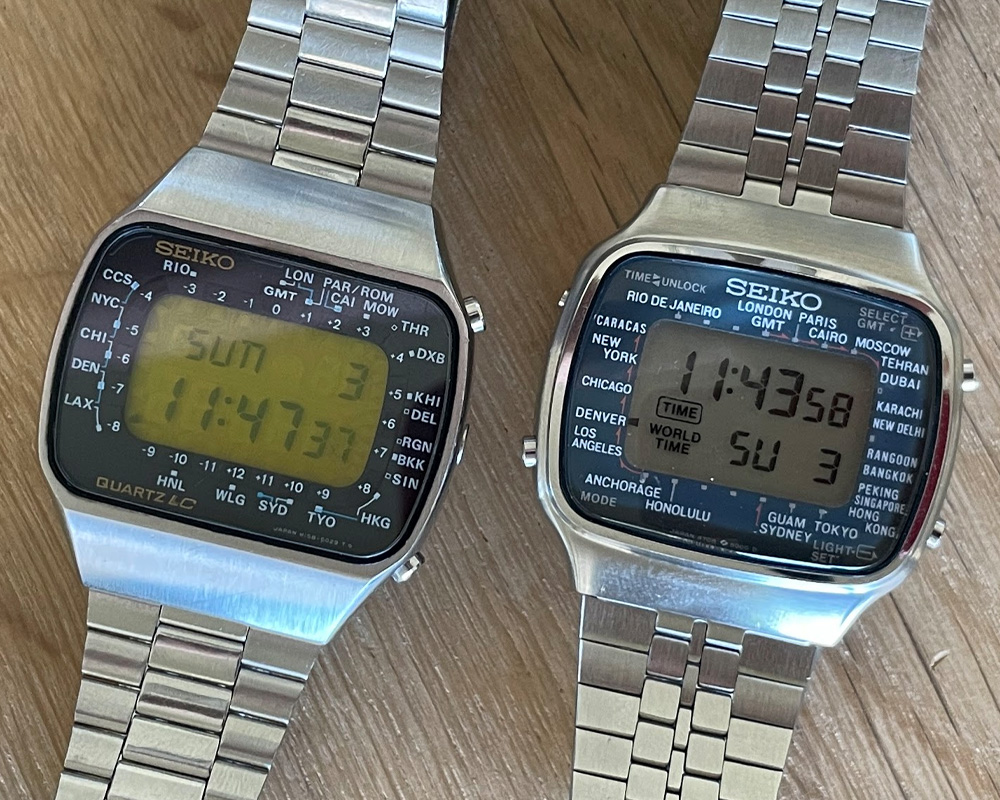
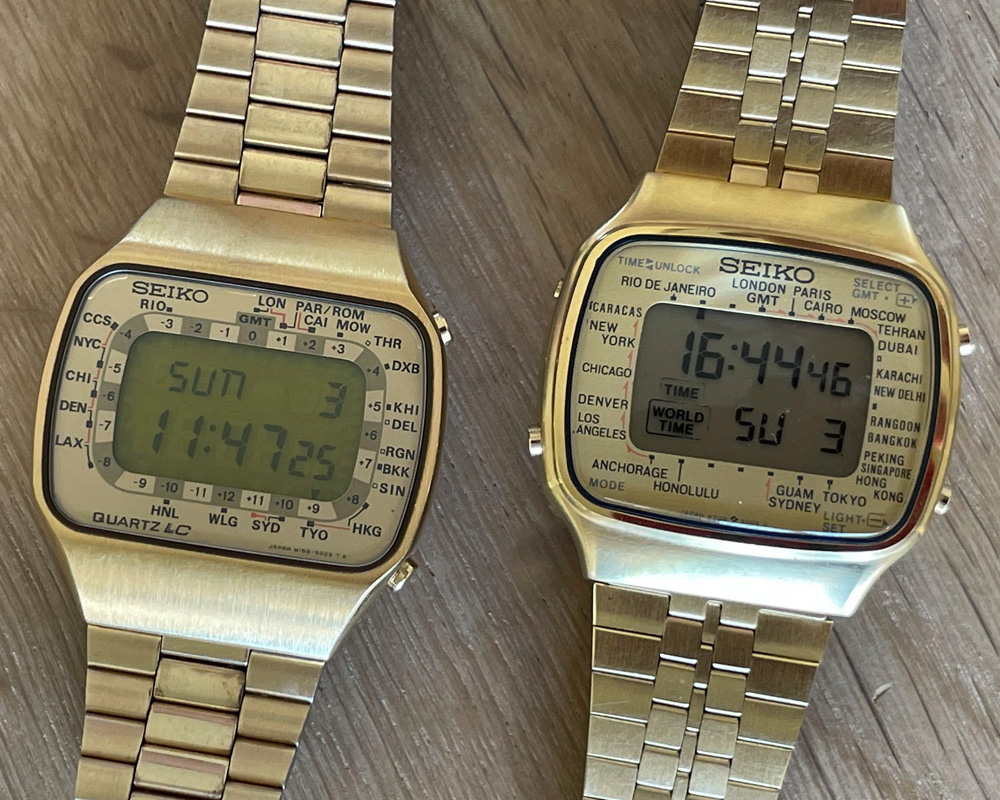
Like the M158, the A708-5000 came in only two options, stainless steel with black dial frame or gold-tone.
Jules Borel and Boley databases list a A708-5010, though as of this writing, no images of this specific sub-model have been found.
It is likely this is an erroroneous entry, perhaps confused with the A718-5010 (Frankenstein).
Unfortunately the A708 and A718 modules are significantly less robust than the M158 and seem to have a higher failure rate.
They also have significantly fewer removeable and replaceable parts compared with prior generations.
Even the incandescent light is soldered in place on this module.
The only reasonable repairs that can be performed are cleaning and replacement of gaskets.
Measurements
Here are approximate measurements.
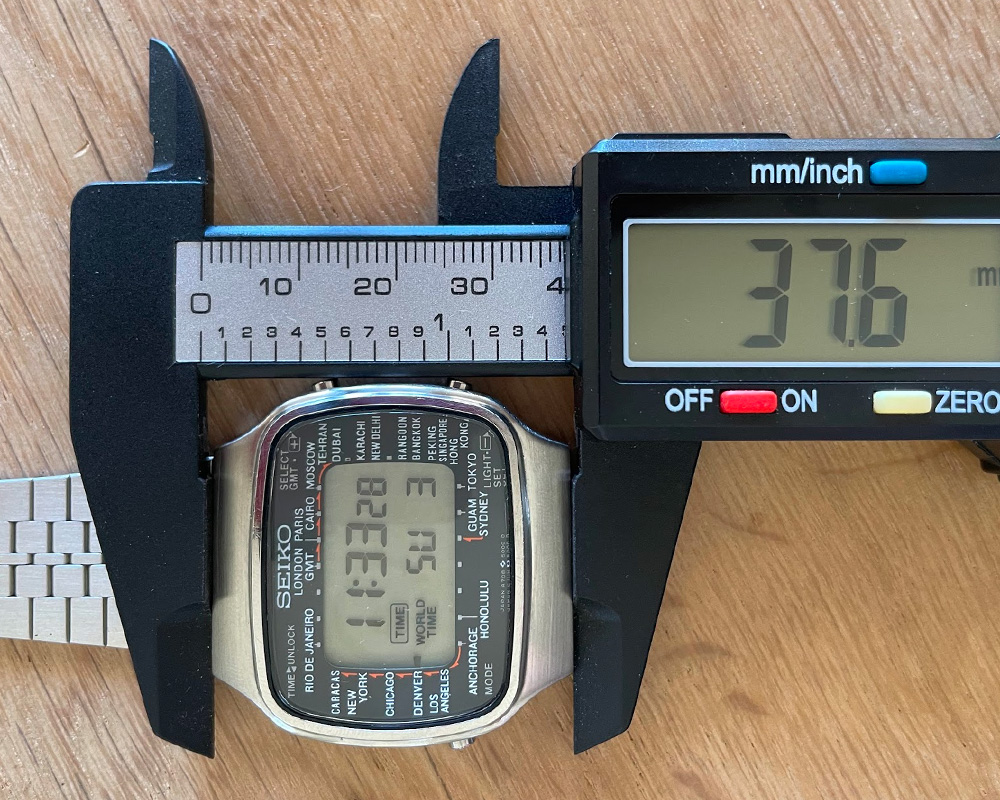
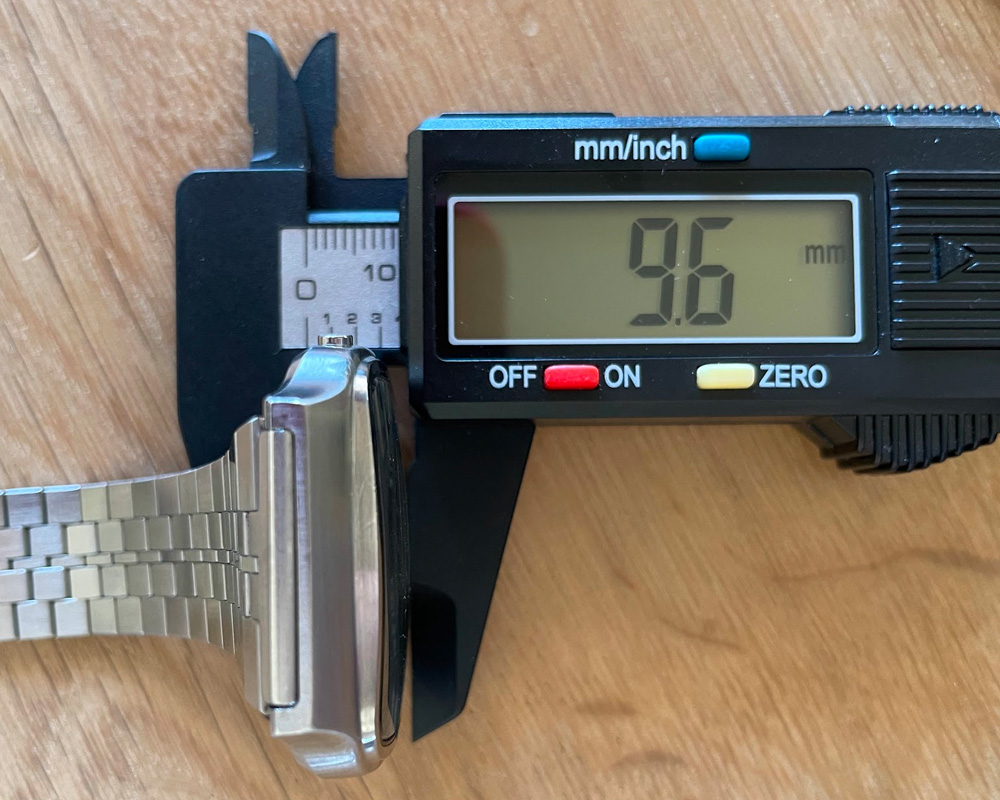
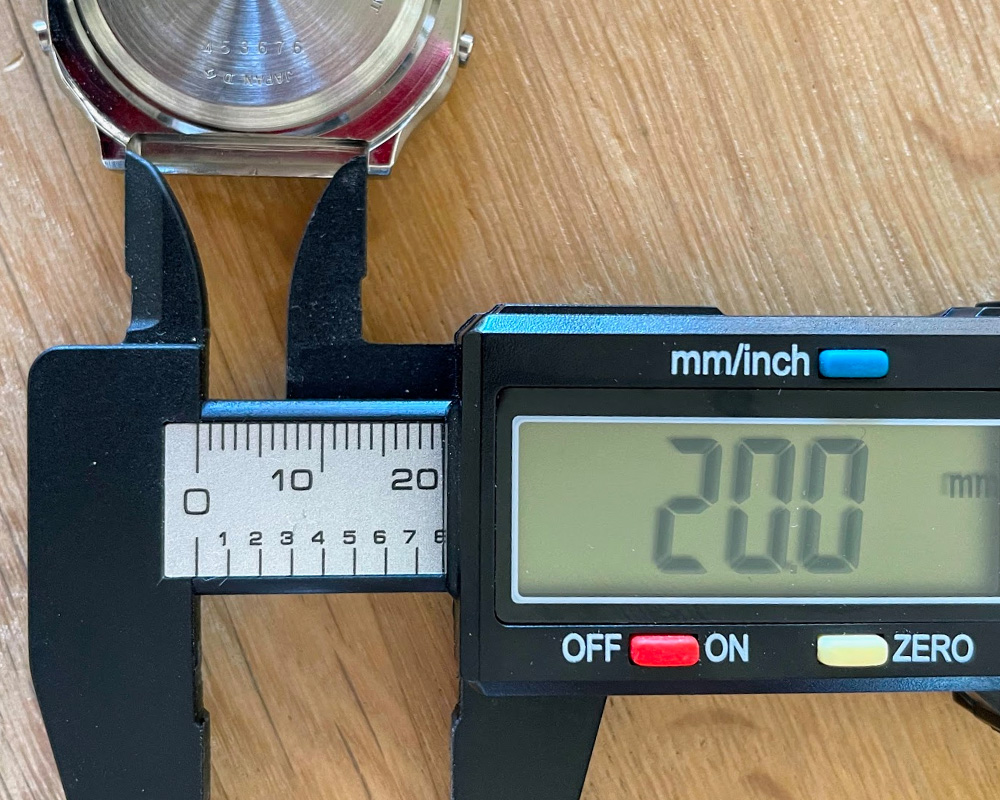
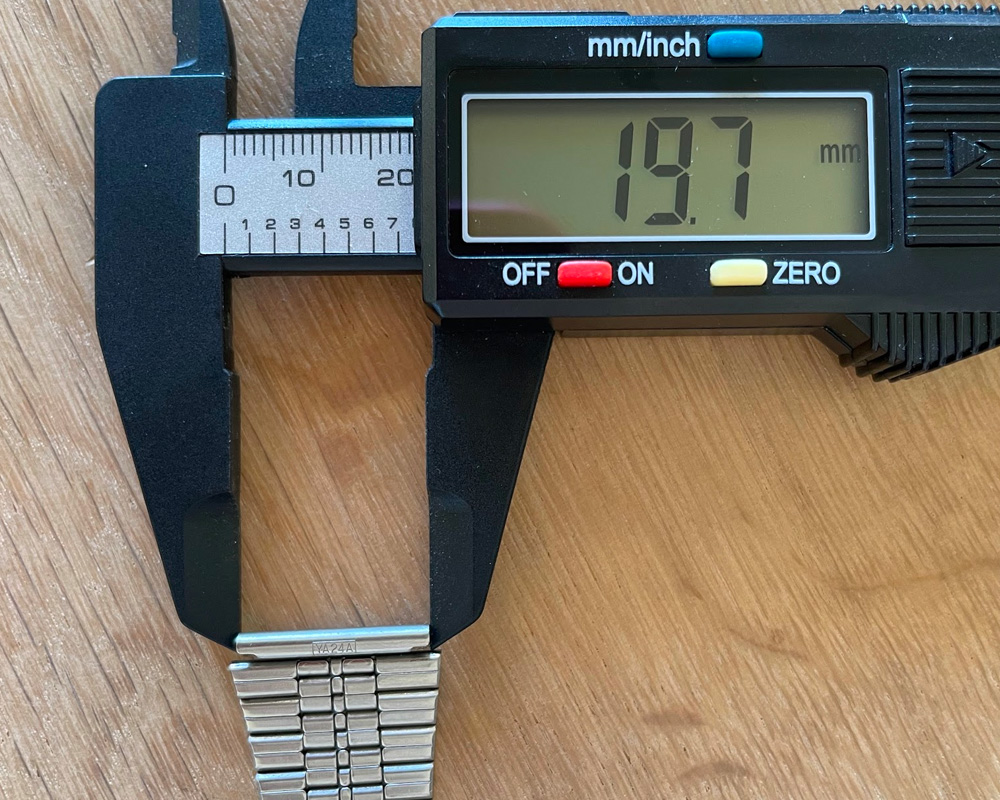
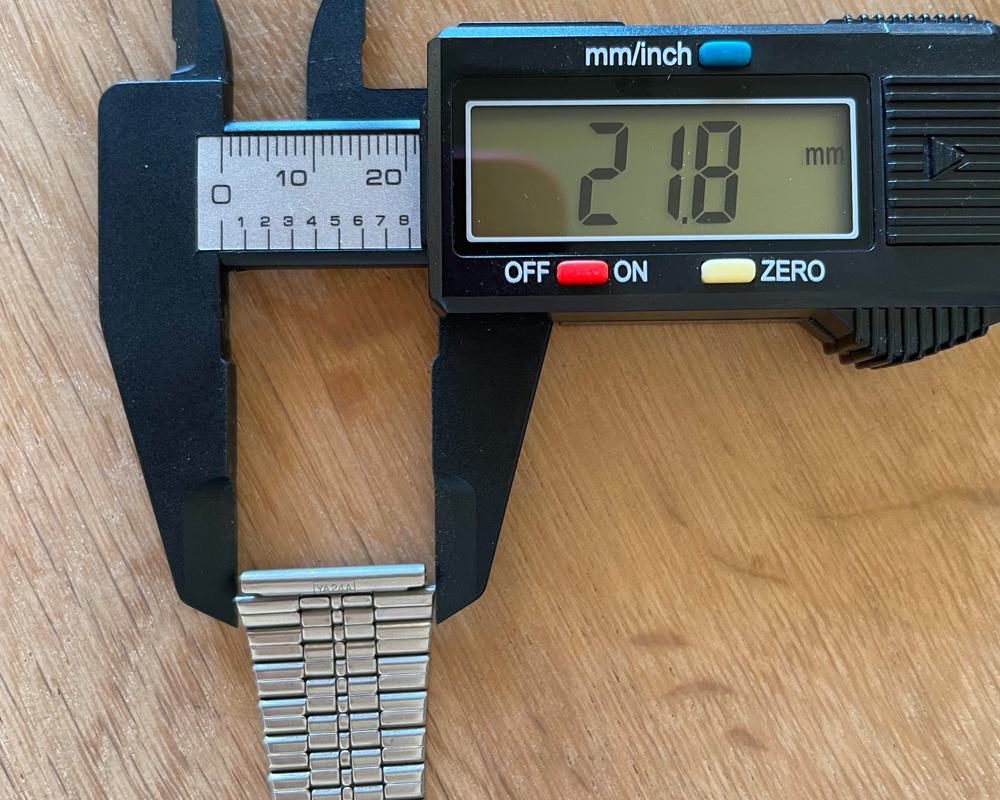
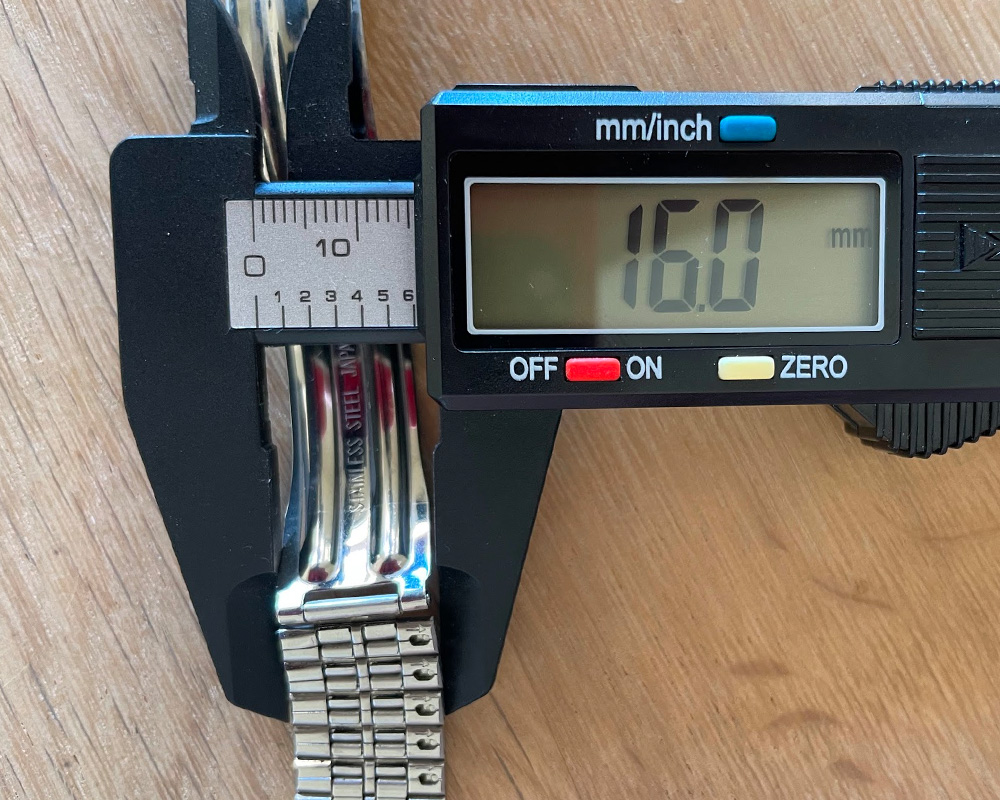
Dial Frames
Here are the two different dial frames.
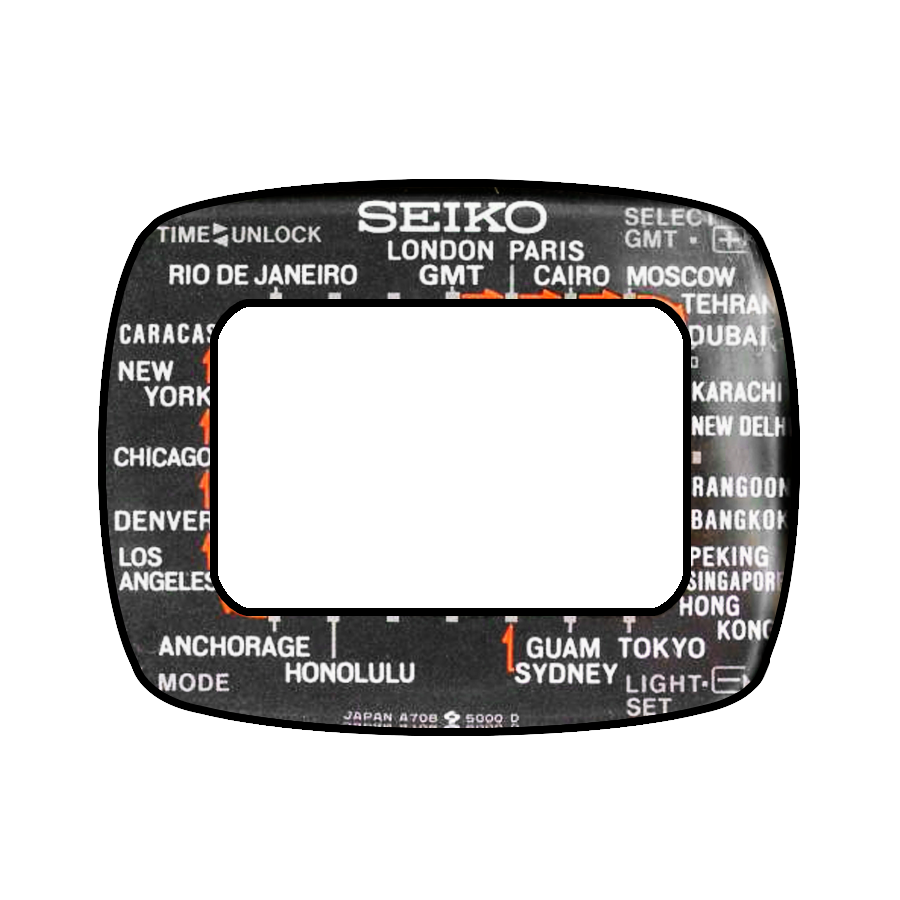
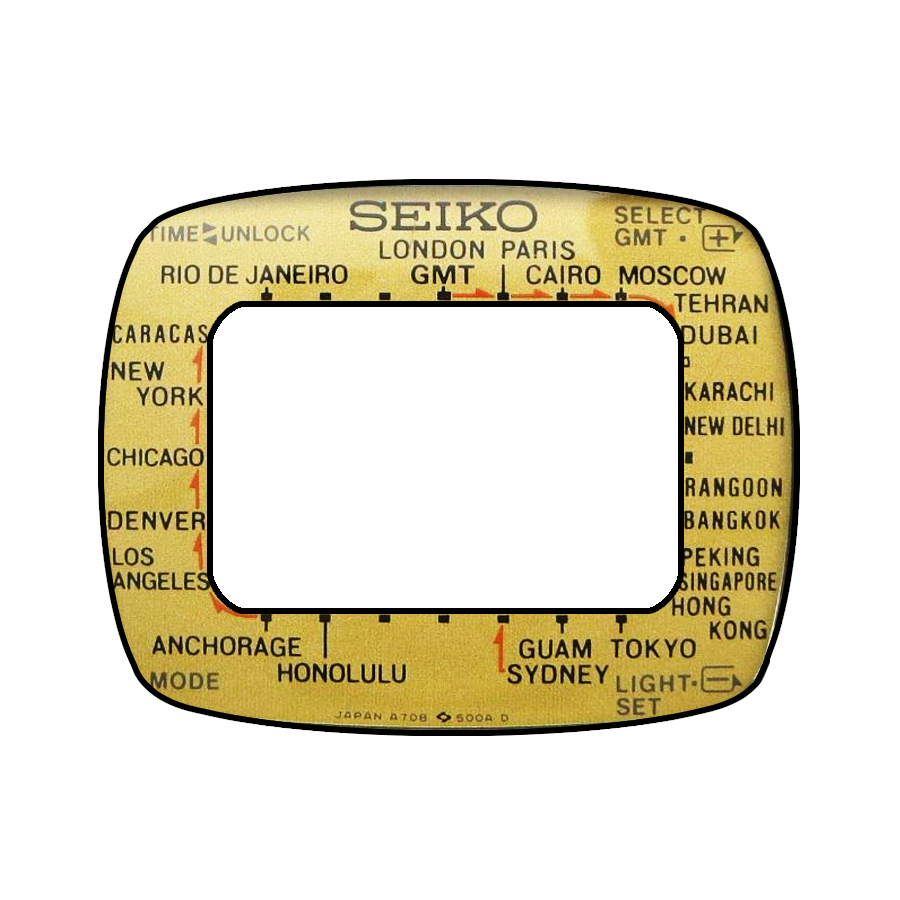
Original Bracelets
YA24A
The YA24A bracelet was matched with the A708-5000 model in stainless steel. The lug width at the spring bars is 20mm, with the bracelet itself tapering from about 22mm to 16mm at the clasp.
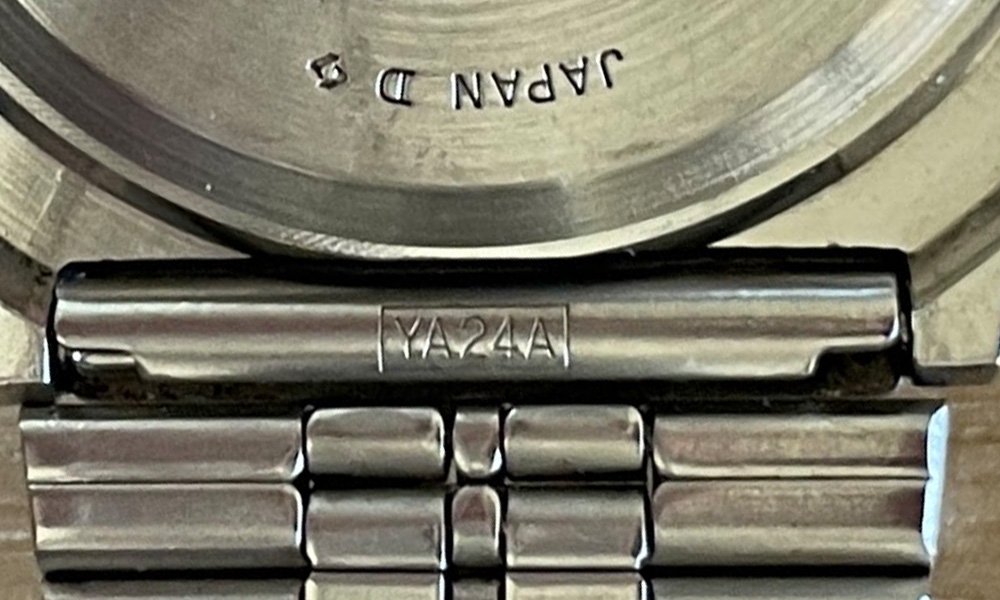
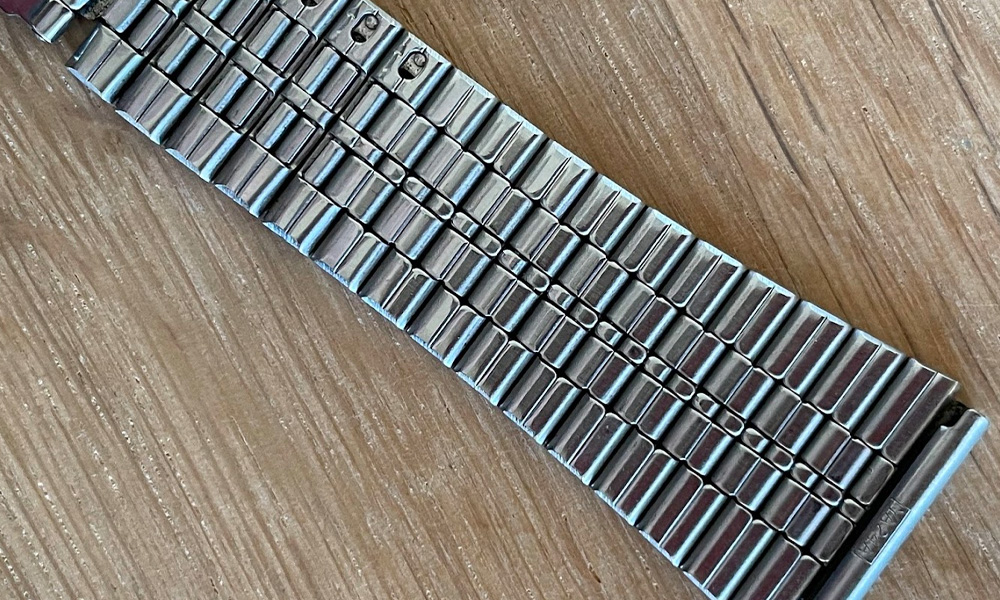
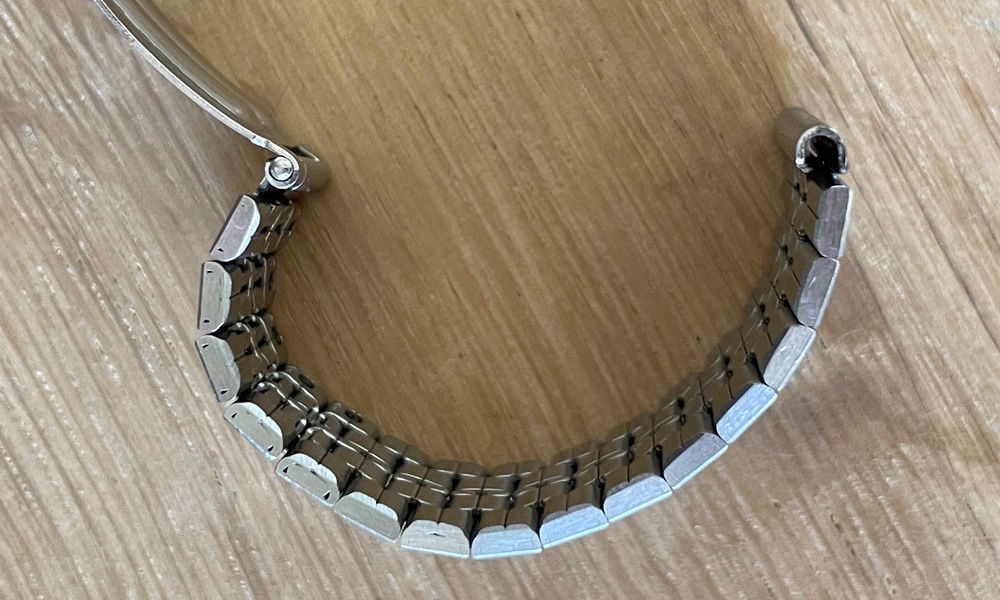
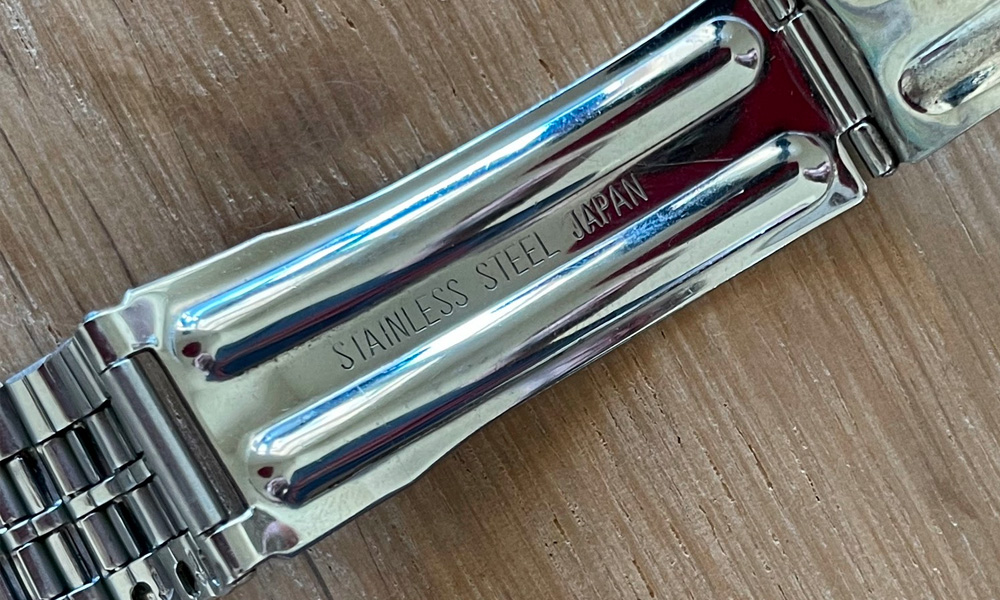
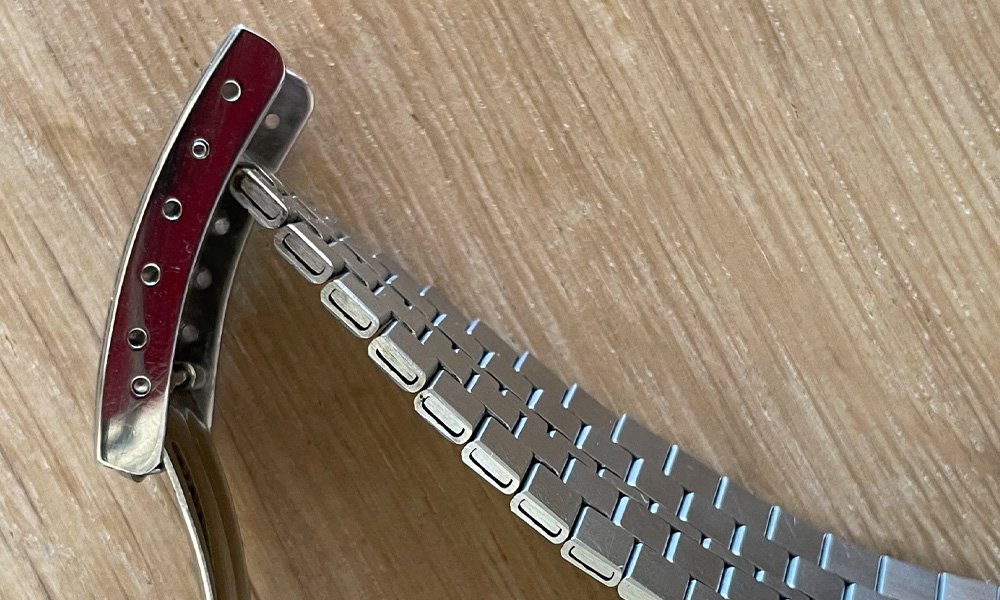
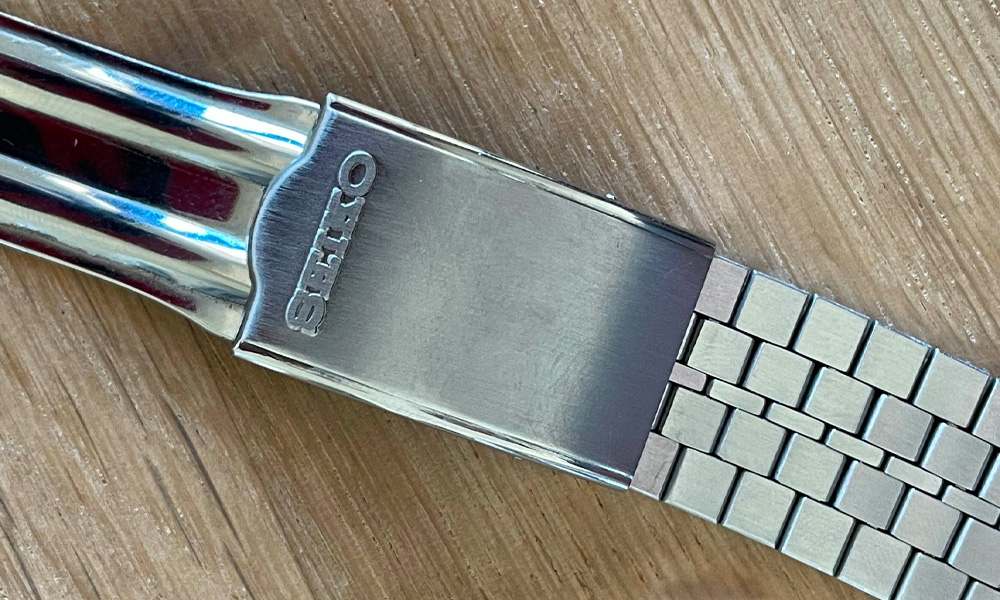
YA23A-E
The YA23A-E bracelet was fitted on the A708-5000 in SGP (gold-tone) finish. It it identical to the YA24A except the outside / top color. The underside and sides of the bracelet are stainless steel.
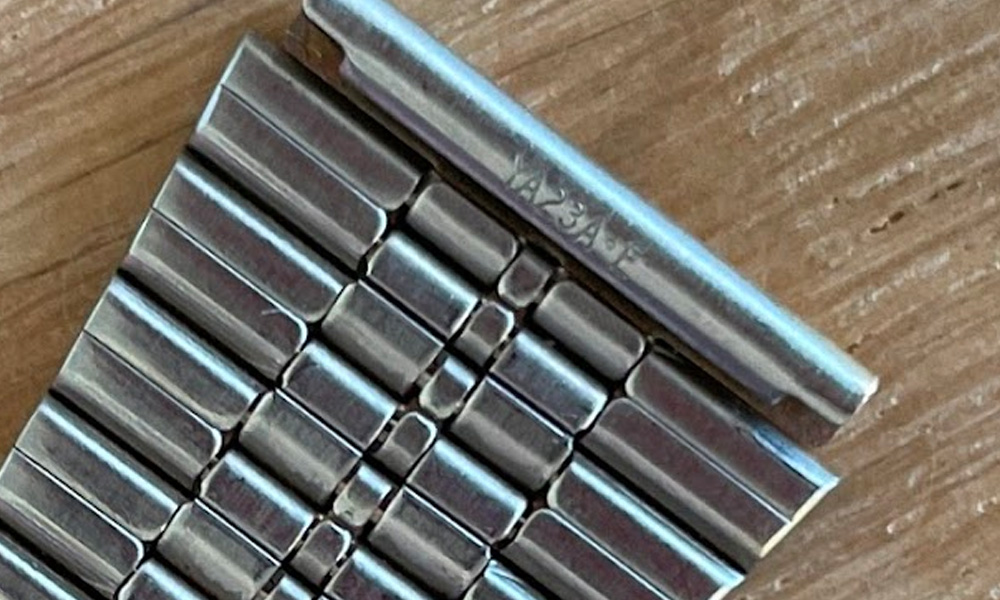
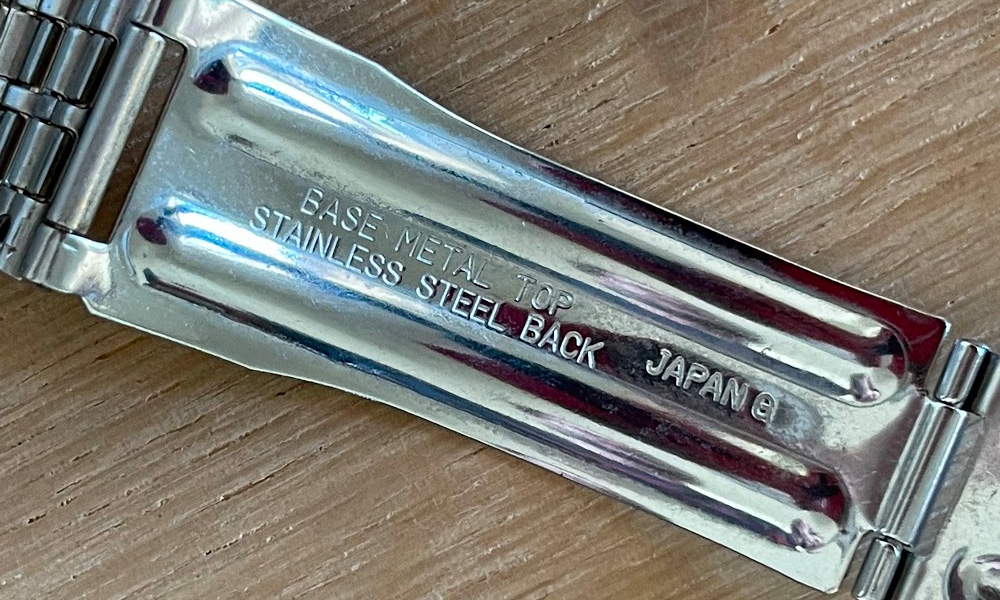
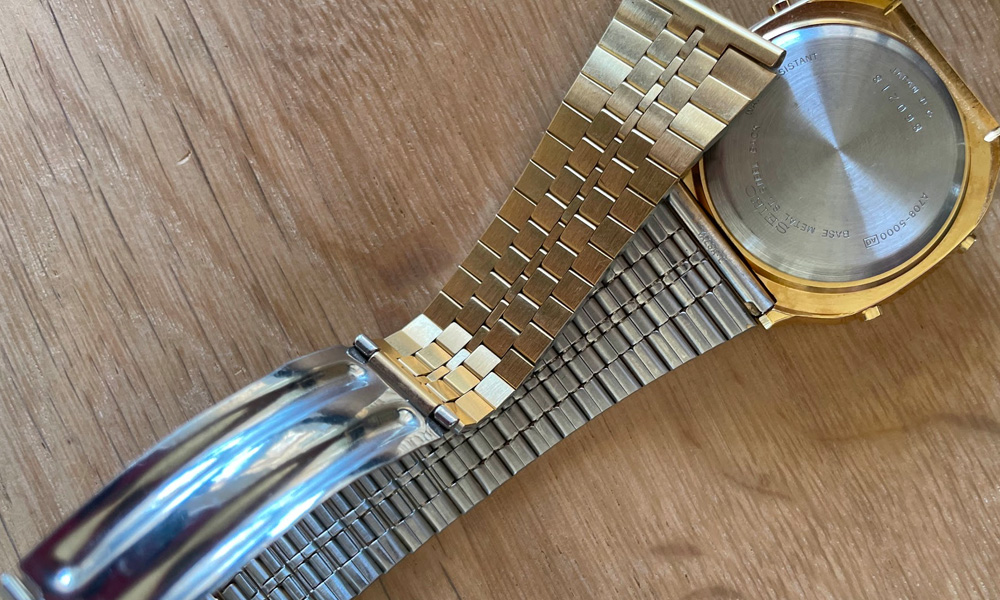
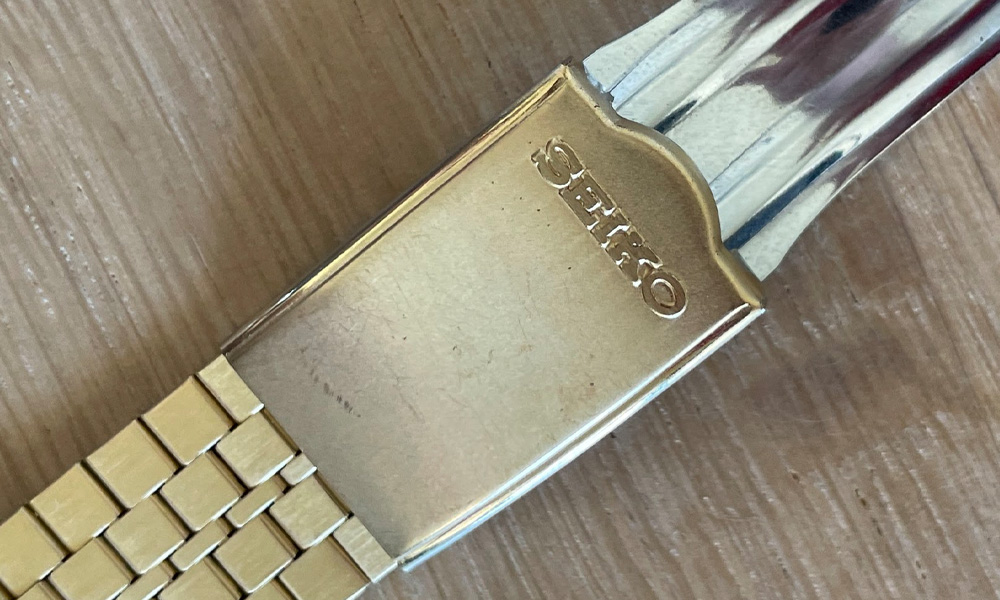
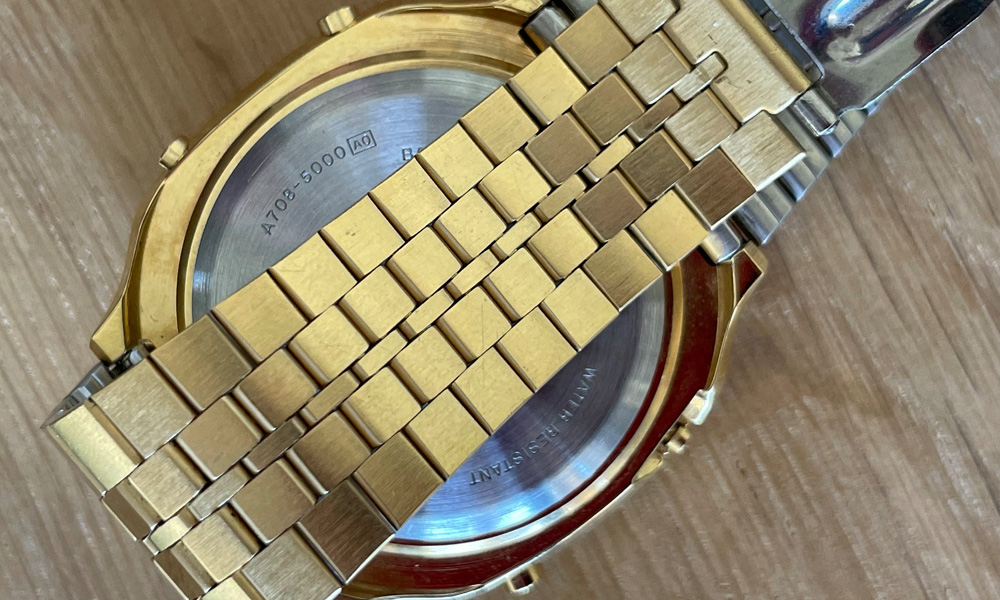
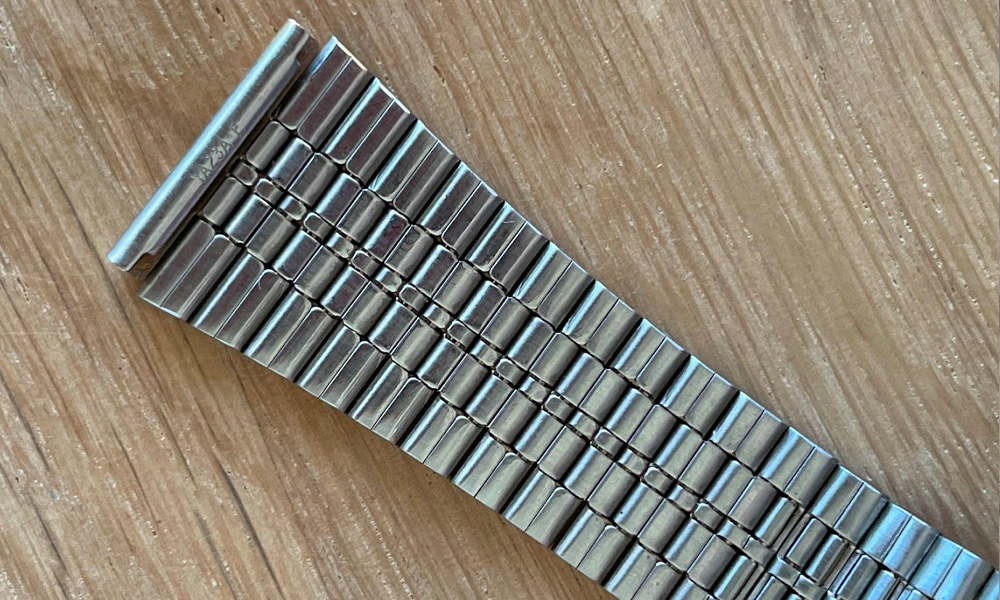
Production Numbers
Based on the image data collected to-date, this series was produced from at least May 1984 through at least November 1988. These models use a 6-digit serial number scheme, allowing for up to 9,999 watches per production month/year. Assuming a 55 month production run, this allows for a max production of 549,945 watches, with a minimum production of 8,886 based on current image data.
Resale Value
Please note:
- This scale is a derivative of the Hagerty Classic Car Condition Rankings, adapted for watches. It is an attempt to keep it simple. They explain it really clearly here (albeit in car terms): Car Conditions: What The Numbers Mean.
- Almost no one owns or has even seen a condition 1 example of this watch in at least a few decades. Most of what is sold online today are condition 4 and 5 watches - if you think you have a gem, it is most likely a 3.
- While many enthusiasts spend inordinate amounts of time chasing down the best deal, digging through the dark corners of the internet, local antique shops and estate sales, and are ok fixing things up themselves... a lot of others would like to just know what a clean example is worth from a reputable source - that's what these are. Think of them as the price you would expect to pay if you saw one of these under the glass at your favorite local watch shop.
- All values assume OEM parts or all original examples. After market dials, mismatched bracelets etc will reduce the value, in some cases substantially. For example a non-original bracelet can reduce the overall value by 10-20%, a non-original dial may reduce resale value by 80% or more.
- Finally, gold-tone variations (these are not gold plated, but rather gold colored base metal) command a much lower resale value, from 50% to 80% less than equivalent examples in stainless steel.
| Rank | Description and Value |
|---|---|
1 |
Condition 1
A perfect original (NOS) that has been professionally serviced and where all components are functioning as new; also a watch that has been restored to current maximum professional standards of quality in every area, showing no signs of wear; a 95-plus point show piece that isn't worn.
|
2 |
Condition 2
Well-restored or a combination of superior restoration and excellent original, where any replacement parts are strictly OEM; also, an extremely well-maintained original showing very minimal wear, or NOS that has not been professionally serviced.
|
3 |
Condition 3
Completely operable original or "older restoration" showing wear; also, a good amateur restoration, all presentable and serviceable inside and out. Plus combinations of well-done restoration and good operable components or a partially restored watch with all parts necessary to complete a restoration and / or valuable NOS parts.
|
4 |
Condition 4
A wearable watch needing no work to be functional; also, a deteriorated restoration or a poor amateur restoration. All components may need restoration to be "excellent", but the watch is usable "as is".
|
5 |
Condition 5
Needs complete restoration; may or may not be running, but isn't rusted, wrecked or stripped to the point of being useful only for parts.
|
6 |
Condition 6
May or may not be running, but is weathered, wrecked and/or stripped to the point of being useful primarily for parts.
|
Other Resources
The Internet is littered with various documents about this watch. Here is a quick collection to save you some googling around.
Related Articles
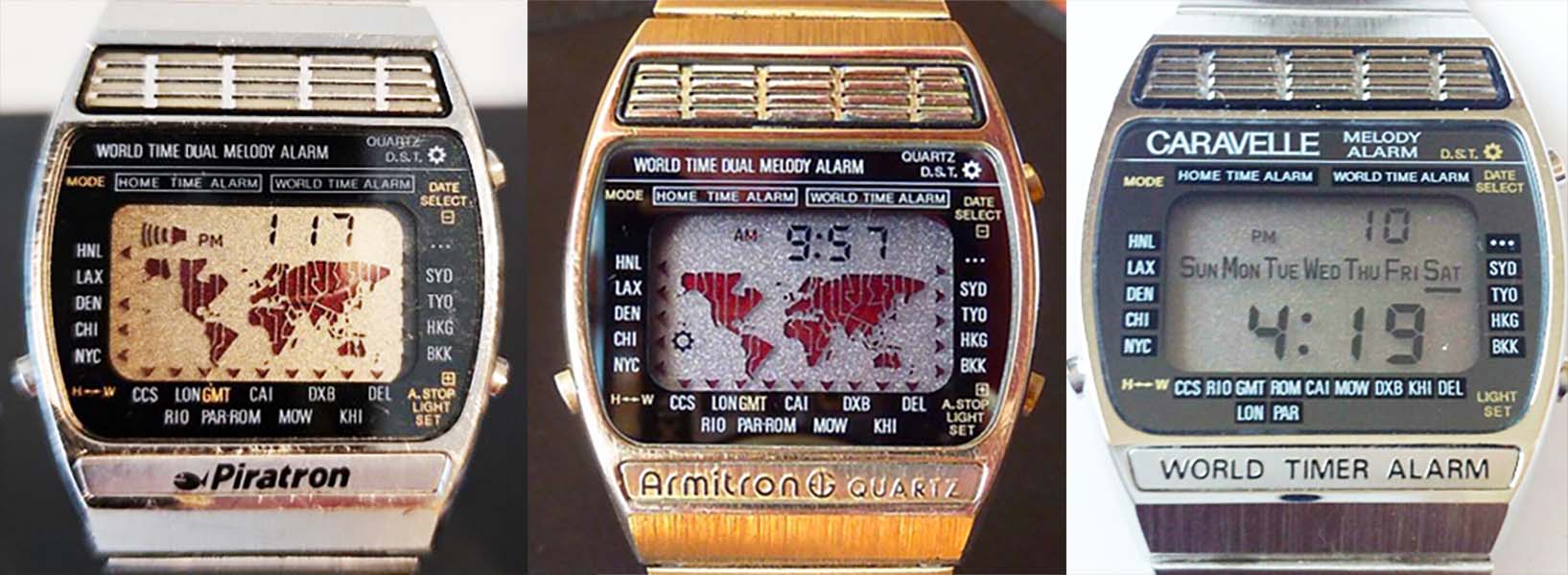
Counterfeits and Copies of The Seiko A239
As the saying goes, imitation is the highest form of flattery. And the SEIKO A239 had quite a few admirers.
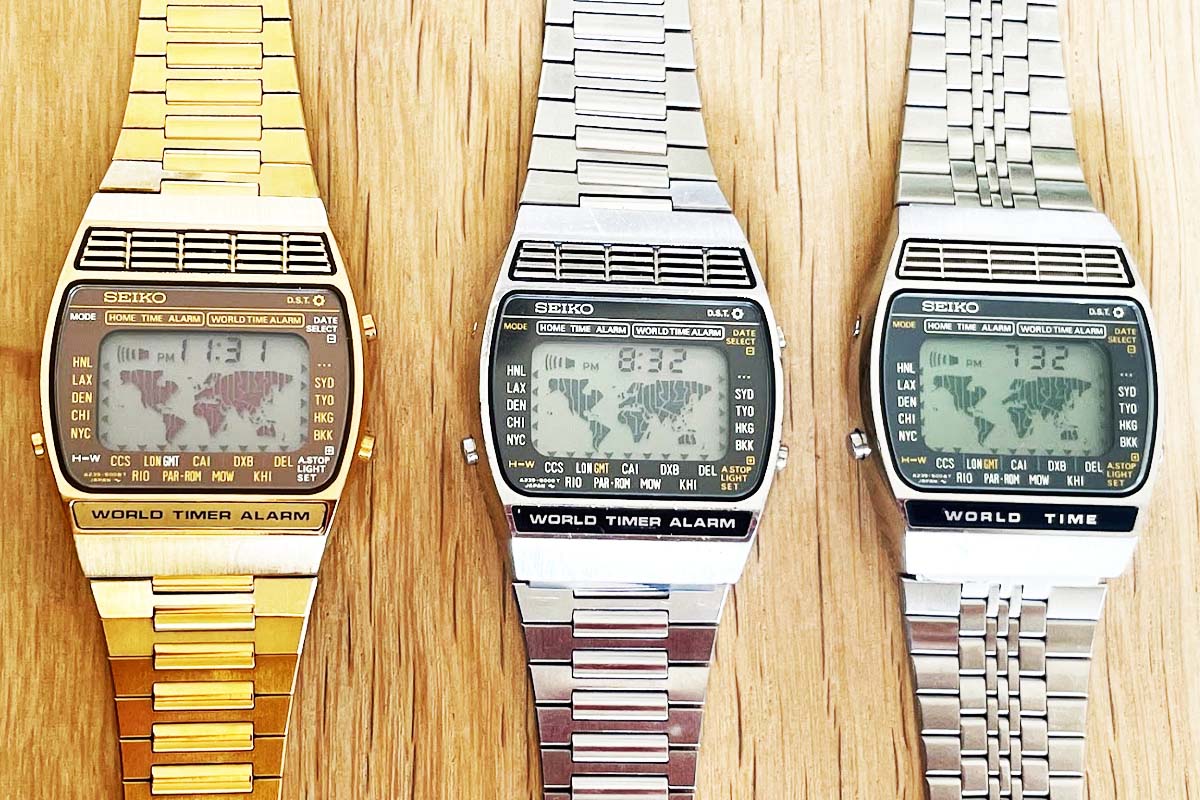
The Seiko World Time A239-50XX - The Atlas
All about the 3rd series of digital LCD world time watch from SEIKO, produced in 1979
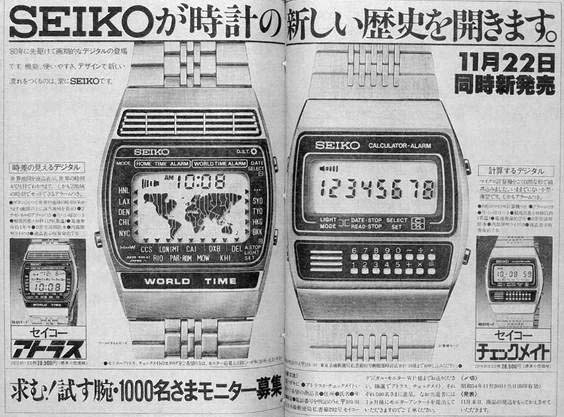
Old Ad Scans: Seiko World Time A239-50XX
A small collection of ad and catalog scans of the SEIKO World Time A239-50XX
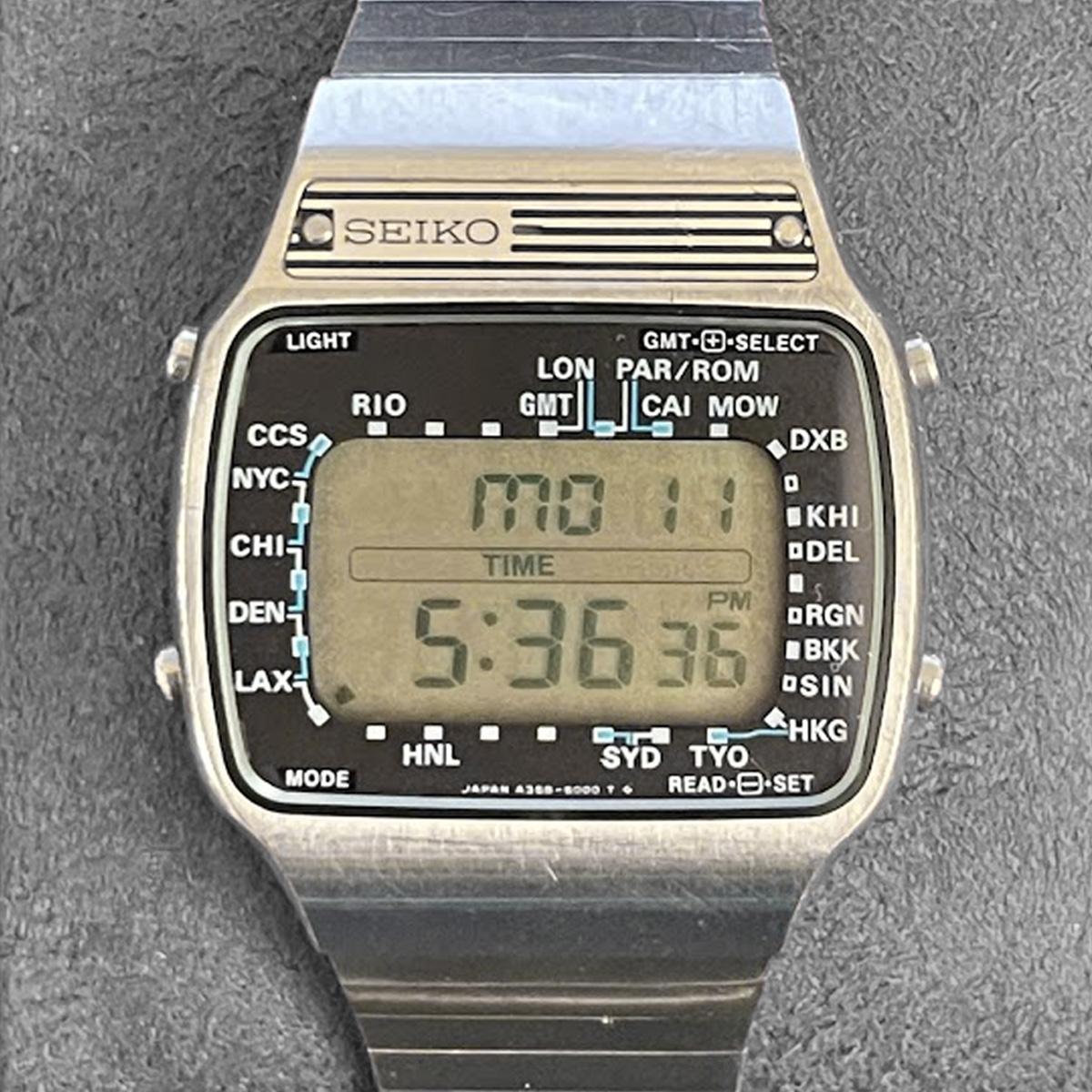
The Seiko World Time A358-500X - The Alarm
All about the 2nd series of digital LCD world time watch from SEIKO, produced in 1979

The Seiko World Time A718-5010 - The Frankenstein
All about the A718-5010 digital LCD world time watch from SEIKO, produced in 1984

The Seiko World Time A718-5030 - The John Cleese
All about the A718-5030 digital LCD world time watch from SEIKO, produced in 1984

Counterfeits and Copies of The Seiko M158 PAN AM
As the saying goes, imitation is the highest form of flattery. And the SEIKO M158 had quite a few admirers.

The Seiko World Time M158-500X - PAN AM
All about the 1st series of digital LCD world time watch from SEIKO, produced in 1977
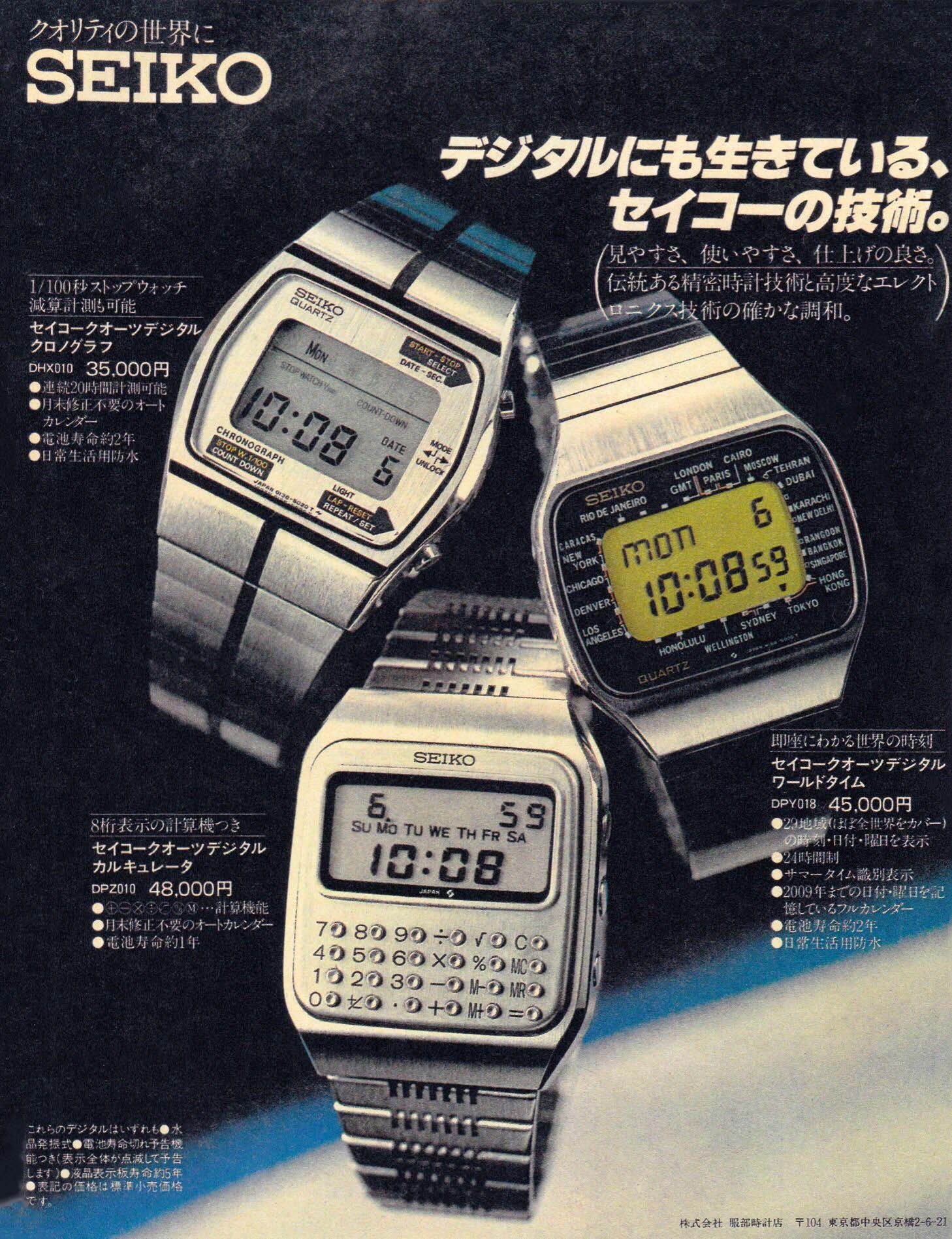
Old Ad Scans: Seiko World Time M158-500X
A small collection of ad and catalog scans of the SEIKO World Time M158-500X
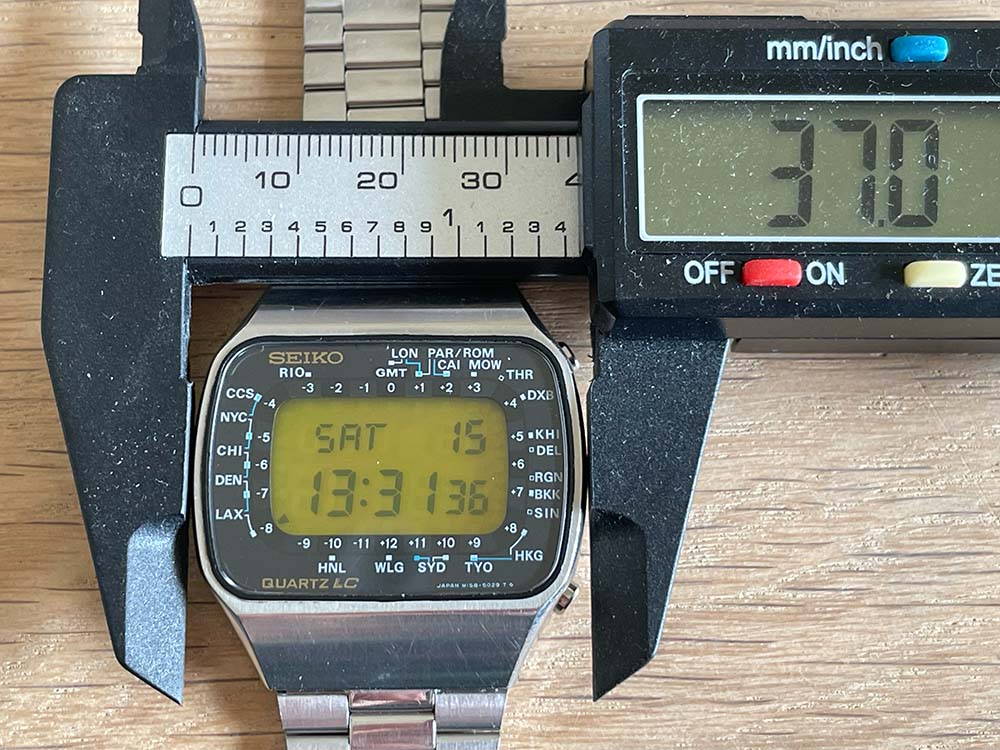
Authenticating The Seiko World Time M158-500X
Tips on confirming the originality of your Seiko World Time M158-5000 and M158-5009
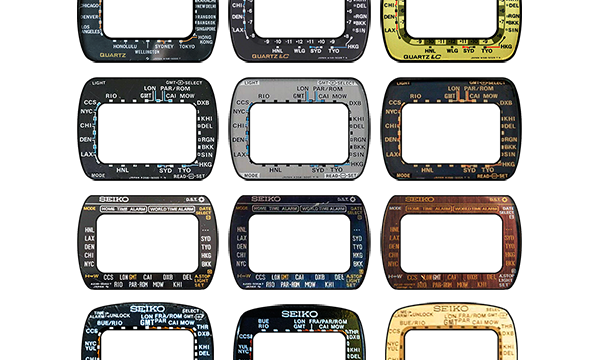
Reference Cities - Changes over the Years
A history of changes to the Cities Dial Frames on SEIKO World Time digital watches from 1977 through 1988
